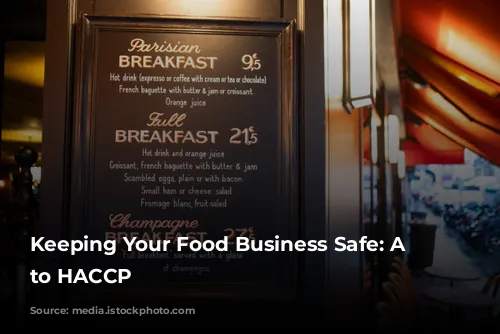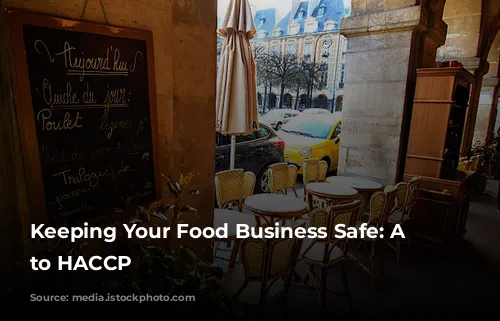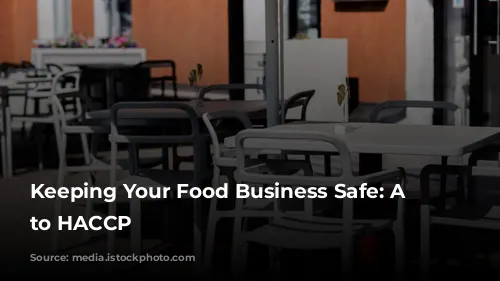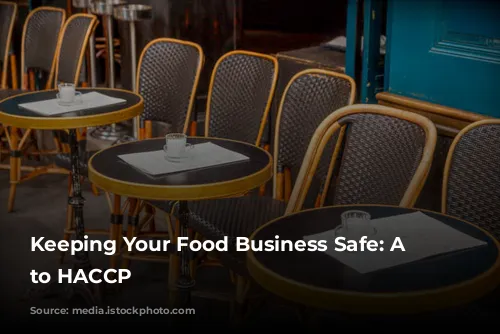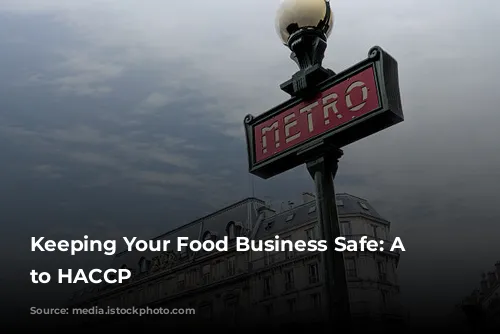Food safety is paramount in any establishment that handles food. From restaurants to grocery stores, ensuring the health and well-being of customers is a top priority. HACCP, which stands for Hazard Analysis and Critical Control Point, is a vital system designed to prevent foodborne illnesses. This comprehensive guide will delve into the essential elements of HACCP, ensuring your food business operates hygienically and efficiently.
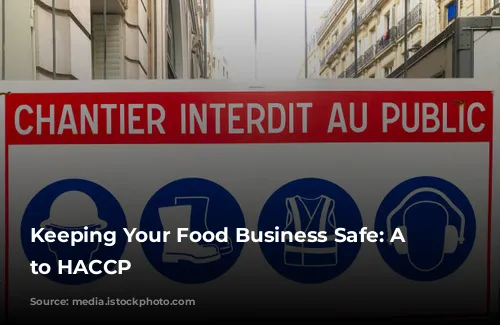
Planning Your Food Business
Before you even open your doors, careful planning is crucial to ensure a safe and efficient food handling environment. Here’s what you need to consider:
- Hygiene: Create dedicated areas for staff and customer sanitation, keeping them separate from food preparation areas. Locate changing rooms conveniently near employee workstations. For businesses with a significant number of employees, consider a designated catering room with adequate seating, a drinking water tap, and a refrigerator.
- Layout: Strategically position your trash bins to avoid unnecessary travel through food preparation or customer areas. This helps minimize the risk of contamination.
- Equipment: Invest in high-quality equipment made of stainless steel or enamel. Disposable paper should be used for hand drying, as dishcloths can harbor bacteria. Pedal-operated bins are essential for hygienic waste disposal.
- Ventilation: Ensure your ventilation system effectively separates clean and dirty air, preventing the spread of contaminants.
- Essential Equipment: Every food establishment needs:
- Toilets with a toilet bowl, washbasin, and soap.
- Separate sinks for handwashing and vegetable cleaning in the kitchen.
- Automatic hand-washing stations activated by leg or foot controls.
- Hand dryers using forced air or disposable paper.
- Lockers for employees requiring specific work attire.
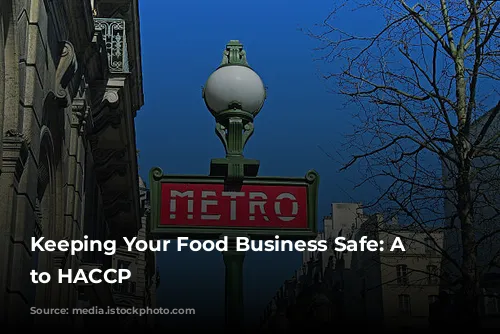
Maintaining a Hygienic Environment
Maintaining a clean and sanitized environment is essential for food safety. Follow these essential practices:
- Regular Cleaning: Work surfaces and utensils must be thoroughly cleaned at the end of each shift.
- Food Storage: Never place food directly on the floor.
- Personal Items: Keep personal items like phones off work surfaces.
- Bulk Food: Utilize clamps for serving bulk food to customers.
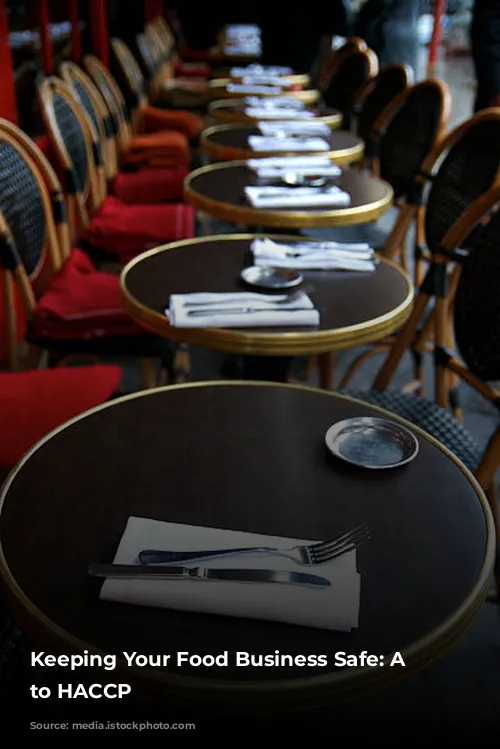
HACCP Training
HACCP training is an invaluable investment for any food business. It provides professionals with the knowledge and skills to identify and control potential hazards related to food hygiene. Here’s what you need to know about HACCP training:
- The Importance: It encompasses all stages of the food chain, from production to retail.
- Who Needs It: Every food establishment needs at least one employee to have completed this training.
- Cost: The cost of training typically ranges between €200 and €500, depending on the provider.
- Providers: Recognized training organizations can be found on the Regional Directorate for Food, Agriculture, and Forestry website.
- Exemptions: Individuals with at least 3 years of experience in the food industry as a manager or operator might be exempt from the training requirement. Many cooking and catering diplomas automatically include this training.
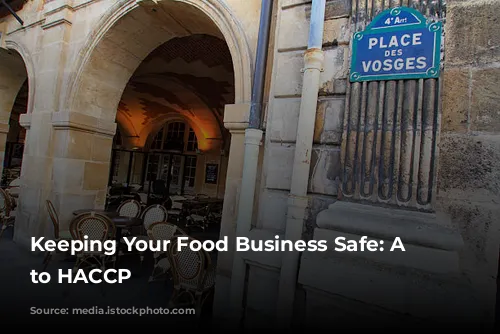
Activities Not Covered by HACCP Training
Certain activities are excluded from the mandatory HACCP training requirements. These include:
- Small Shops: Food establishments with a few “stand-up” tables for quick meals are not required to undergo HACCP training.
- Home Cooking: “Chefs” preparing meals in private homes are also exempt.
- Limited Capacity Host Tables: Host tables offering a limited number of guests, not exceeding the accommodation capacity, are not subject to mandatory HACCP training.
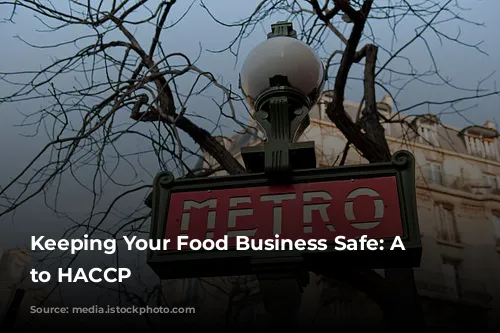
Essential Hygiene Practices for All Food Handlers
Everyone involved in food handling must adhere to strict hygiene practices to prevent contamination and foodborne illnesses.
- Gloves: Change and dispose of gloves frequently.
- Handwashing: Wash hands thoroughly before handling food, after using the restroom, and after contact with potentially contaminated surfaces.
- Sick Employees: Anyone exhibiting symptoms of illness, such as flu or gastroenteritis, or having a wound, must not handle food.
- Water Safety: Non-potable water should never be connected to or able to flow back into drinking water systems. Ice used for food must be made from drinking water. Water vapor used for cooking must come from clean water.
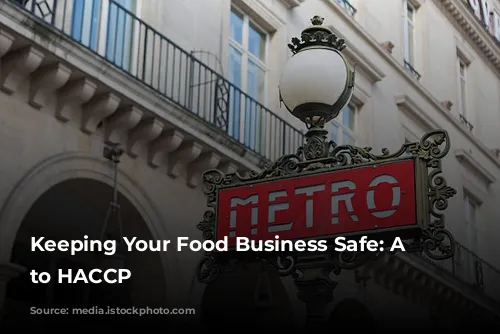
Maintaining Temperature Control
Maintaining proper temperature control is essential for food safety.
- Cold Chain: The cold chain (storage between 0° and 3°) must never be broken. Monitor refrigerator and cold room temperatures continuously.
- Hot Chain: Food must reach 63°C during cooking and maintain that temperature. Cooling should be done rapidly to reach 3°C. Once cooled, food should be refrigerated immediately.
- Raw Materials: Store raw materials and processed products in separate refrigerators.
- Storage: Store raw materials in airtight containers.
- Freezing: Do not refreeze a thawed product. Thaw products in the refrigerator, never in open air. Freezing raw materials, leftovers, or pre-packaged products intended for storage at positive temperatures is prohibited. However, fresh products from slaughterhouses and fisheries may be frozen.
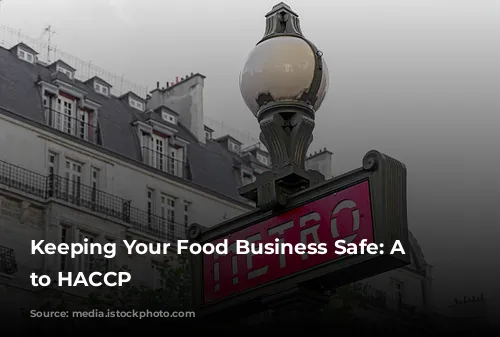
Waste Management
Proper waste management plays a crucial role in maintaining a hygienic environment.
- Bins: Empty bins regularly, ensuring they have lids and pedal-operated openings. Wash bins frequently.
- Designated Areas: Store garbage cans away from food preparation areas.
- Safe Handling: Staff should not have to cross kitchens or service areas to reach the garbage room. Use appropriate safety equipment, such as boots and gloves, when handling waste.
- Specialized Waste: Butchers must use a renderer for meat waste disposal. Approved bodies should collect used frying oil.
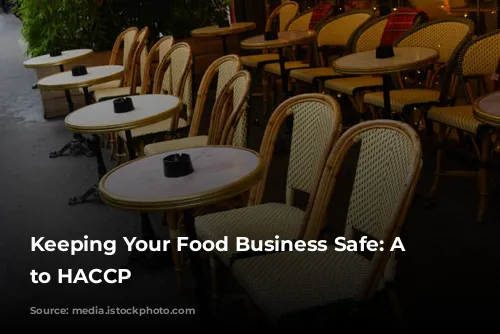
Consulting the Official Guide
Official hygiene guides are developed by industry professionals and validated by the State. These guides provide detailed information specific to your industry, including rules and exceptions.
- GBPH: Consult the Guide to Hygiene Practices (GBPH) specific to your professional sector.
- Online Access: You can access the GBPH online for free.
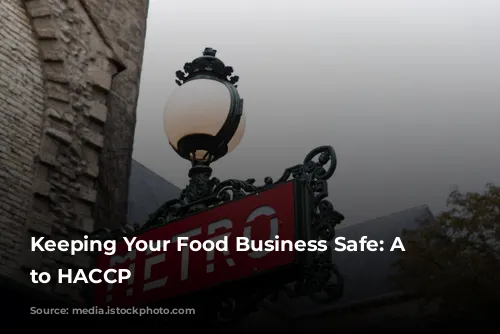
Conclusion
Food safety is an ongoing commitment. By adhering to these guidelines and embracing HACCP principles, you can protect both your customers and your business. Remember, food safety is everyone’s responsibility. Regular training, diligent cleaning, and a proactive approach to hygiene will help you maintain a safe and thriving food business.
